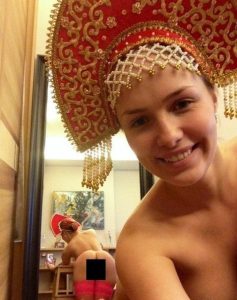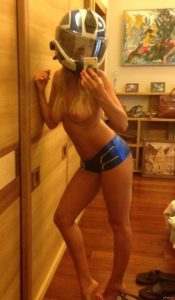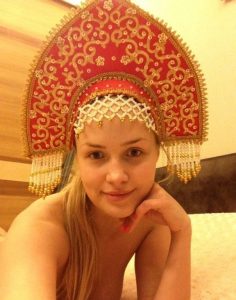And, while it can be profitable, it’s going to require a lot more hard work than just finding the perfect supplier. So, this post is dedicated to not just helping you find the perfect person to make your leggings, but also everything else that will make your athleisure brand a success!
WHY READING THIS ENTIRE GUIDE IS IMPORTANT…
And, not just the legging manufacturing part.
Well, it’s actually kind of selfish, but in the end, it will help you, I promise.
Many suppliers, myself included, will actually look at a brand’s budget and marketing plan to decide if they want to work with them or not. That’s because we want to know that the newbie brands that we are going to help and invest a ton of our time into are eventually going to grow and become profitable clients. Unfortunately, as factories, we cannot run our businesses, only helping new brands – they take up a lot of our time while they are still learning, and don’t really make us much money.
We’re basically placing a bet on you and your success when we take on a small brand as a client. It means that we think you have what it takes to grow, scale and become one of the next big brands.
So, if you take anything else away from this article, please let it be this. Getting your hands on the same factory that Lulu uses is not what is going to equate to success. But, if you’re here for manufacturers don’t worry, I’ll share a few great resources for manufacturing leggings perfect for new brands soon. What will create success, is basically everything else I am about to share with you.
DON’T FEEL LIKE READING? CHECK OUT THIS 60 SECOND SLIDE DECK WITH ALL THE JUICY DETAILS
WHAT YOU WILL LEARN
BUT BEFORE WE GET STARTED…
I love helping startup brand founders succeed, so I created a bunch of free guides that will help you with your business.
They won’t be free forever, so make sure to grab them while you can.
GOLDEN OPPORTUNITY, OR ARE YOU TOO LATE TO THE GAME?

Image credit: Alo Instragram
Depending on who you ask, the athleisure market in 2022 was somewhere between 328 and $386 billion. Some forecasters are even predicting that it will be worth anywhere between $626 and $852 billion by the year 2032.
And this is important. While the niche might seem saturated and like there are endless brands to compete with for customers, this continued growing demand will create openings for new brands. So, if you’re worried, you can’t go up against the big heritage brands like Nike, Adidas, Reebok, etc., Or the new brands with big funding and lots of press like Alo, Carbon38, and Girlfriend Collective – don’t be.
Don’t be.
This increased value is going to create the space you need to claim your market share and be a success. This blog post is going to teach you not just how to make leggings and other athleisure apparel with suppliers. It will show you how to stand out in the market, give you design tips for the best product ever. And, yes, at the end, I’m even going to recommend some of my favorite manufacturers that you can try out and get started with today.
By the way, this post is hyper-focused on athletic brands, niche specifically in making workout leggings and sports bras. For more general startup help, check out those additional resources at the very bottom of the post.
NOT JUST LEGGINGS, A LIFESTYLE

Image credit: Girlfriend Collective Instagram
While it’s important to create a quality product that lasts and holds up, I want to prove to you just how important your branding really is, specifically in the legging niche.
Let’s look at three brands that all make just about the exact same pair of black leggings. If you looked at them without any fancy photoshoots or labels and tags, you’d probably think they were all the exact same pair of pants. But they’re not.
So, let’s dive into what is going on here.
BRAND 1, ALO
With Alo, when you’re looking at their website and their social media, their brand vibe is really heavily focused on yoga. You can especially see this in their social media because all of their posts involve their models in super bendy yoga poses. They are all about the flexi girl life. But, interestingly, the website images are totally different; they’re more focused on how the brand can be worn outside of the studio.
With Alo, it’s obvious the focus is on yoga. But it’s for the kind of person who wants everyone to know that they’re super into yoga. They want to wear their yoga clothes everywhere they go.
BRAND 2, CARBON38
Now, with Carbon38, the brand vibe is luxe cool girl. The images are very editorial and feel more aspirational than real life. For example, this image of a person skiing. Now, this is definitely not the average person, and it’s a great example of a brand selling the fantasy.
The focus here is really on high fashion, using leggings and athleisure as a medium.
BRAND 3, GIRLFRIEND COLLECTIVE
With Girlfriend Collective, their website, and their social media, you can see that the focus is very heavy on inclusivity and body positivity. It’s pretty obvious, from the models of all different shapes, sizes, and ethnicities on the website and on their social media.
The branding feels like a complete 180 from Carbon38. Remember, with Carbon38, most people aren’t actually that person, they kind of just wish they were. Girlfriend Collective feels like it could be you or one of your friends that’s on their website or on their social media.
AND THAT’S HOW TO NOT JUST SELL, BUT SELL OUT OF GENERIC BLACK LEGGINGS
To conclude, yes, all of these leggings are basically exactly the same. There’s nothing special or magical about them. But what all of these brands are really good at doing is niching down and being relatable to that specific person who just so happens to wear leggings.
So, if your original plan was to target anyone who wants to work out or wants to wear yoga pants to brunch, that’s not enough. You really need to be competitive. You need to niche down the way Alo, Carbon38, and Girlfriend Collective did.
Decide right now who your micro niche in the big bad world of leggings is. Because, the thing is, if you try to appeal to all three of these types of customers, you’re going to end up getting lost in the noise and not really connecting with anyone.
CHOOSING MATERIALS

Image credit: Carbon 38 Instagram
Once you know exactly who your customer is, then and only then, can you move on to the next step in manufacturing leggings, which is designing. And, the first step in the design process is picking out fabrics.
What makes legging brands unique is that the type of fabric you choose really matters. It will say a lot about your brand and what you stand for – more so than in any other niche where materials might not be as important.
So, let’s dive in.
POLYESTER VERSUS NYLON
Polyester and nylon are the two most common legging fabrics and are quite similar in many ways. Both are made from petroleum. They both also have environmentally friendly recycled plastic options, which are better for the environment than virgin fibers.
So, which should you choose for your brand?
Polyester will be a lot cheaper than nylon, but nylon does have its benefits. Nylon tends to feel a little bit smoother and more high-end, It’s also a lot stronger, so it will last longer.
COTTON
Now, the problem with cotton is that when it gets wet, meaning when you work out and sweat, it gets really heavy. And, that’s because cotton is great at absorbing moisture. And while this offers a really nice option for a casual t-shirt for hot weather, it’s not necessarily the best option when you’re really sweating a lot.
The other thing is that cotton tends to stretch out quite a bit. So after a few wears the knees or butt area might start to look a little saggy.
What you can do to counteract this is invest more money in high quality stretch fibers to be combined with the cotton. I’m going to talk more about that in just a second…
STRETCH FIBERS – ELASTANE, SPANDEX, LYCRA, ETC
Let’s talk about stretch and, more importantly, recovery. Now, what a lot of brands don’t realize is that recovery is a lot more important than stretch. Heck, most people don’t even actually know what recovery means. The first thing a lot of newbies do is they take their fabric, and they pull it as far as they can because they want to see just how stretchy it is. And while that’s great, they’re not thinking about the second part of the equation, which is the recovery.
When we talk about recovery, we are thinking about how that fabric snaps back. If the fabric doesn’t return to its original state or it’s really slow-moving to return back to the size that it was, that’s an indication that that fabric is not going to be good for a pair of yoga pants, a sports bra, or any type of athleisure or performance product. When you’re looking for athleisure fabric, you really want to make sure that the recovery snaps back almost like a rubber band. Because, when you have a fabric with good recovery, it’s going to allow you to create a product where the knees don’t stretch out, the butt doesn’t stretch out, and it doesn’t end up looking saggy after one yoga lesson.
DIFFERENT TYPES OF STRETCH FIBERS YOU NEED TO KNOW FOR LEGGING MANUFACTURING
Okay, so now let’s quickly talk about all the different types of stretch fibers, which can be a little bit confusing. But it’s super important to know before you start manufacturing leggings. They’re spandex, elastane, and lycra. Basically, spandex and lycra are the same thing. They’re a generic term. And, Lycra is actually a brand name, which is going to be a lot more expensive. It’s the same as tissue and Kleenex. The brand name of Kleenex is going to be a lot more expensive than the generic local brand. But at the end of the day they are more or less the same thing.
The reason brands spend more to get that Lycra brand name is because of the quality control. When you’re using Lycra, you know exactly what you’re getting. While you can still get a quality product with a generic spandex or elastane fiber, you will have to do a little bit of testing and digging yourself.
FABRICS THAT WON’T PILL
The next thing I want to talk about is pilling. Pilling is one of the things that consumers complain the most about with athleisure products. Unfortunately, to some extent, pilling is basically inevitable. The reason is, that nylon and polyester are hydrophobic fibers. Hydrophobic means that the fibers hate and actually repel water. So, when you have hydrophobic fibers that hate water, they tend to be really dry, which, creates a lot of static electricity. Remember this, it’s important.
What happens as you wear leggings, is that all the little fibers in the fabric start to break. And, all those little broken fibers collect together like magnets thanks to the static electricity to make a pill.
There are more expensive anti-pill fabrics. But, at the end of the day pilling will always be an issue.
Another way to avoid pilling in your fabrics is to avoid using fabrics that already have damaged fibers. An example of this is brushed finishes.
You know those really soft leggings that are marketed as micro-finished, and just feel super soft and buttery? Those are brushed fabrics. Which are, exactly what they sound like: fabrics that are brushed to create a very small amount of fuzz. This process damages and breaks the fibers and actually leads to more pilling. So, when can you, choose for smooth, unbrushed fabrics and this will help prevent pilling.
DESIGN TIPS

Now that you have your fabric selected, the next step in manufacturing your leggings is to start designing and sampling your product.
The most important thing to remember when designing legging is that your garment might look good in a studio and with a model standing in front of a mirror, but once it gets to a yoga class or it hits the gym, there might be a whole set of issues once fitness and movement is involved.
So, here are a few tips to create a good pair of leggings made for activity.
TIP #1: AVOID FRONT SEAMS
The number one complaint women have about leggings, and the reason for the most returns, is that they cause camel toe. Avoiding camel toe is simple, just don’t use a front seam. Really, it’s that easy.
Now, the reason a lot of big brands include front seams while manufacturing leggings is because adding more seams allows for smaller pattern pieces. And, when you have smaller pattern pieces, you can kind of puzzle them together better to fit more pieces per yard of fabric.
This is important, because it will reduce the brand’s fabric consumption, boosting their bottom line in profits. So, while a font seam is not the right thing to do, it is the profitable thing to do, and that’s why brands do it.
If you want your brand to be better than all the others, avoid those front seams.
One last tip. Another great option for eliminating front seams is not having seams on the entire garment. Seamless leggings are super comfortable and popular these days. The only downside is that they tend to have a very high MOQ, usually around 500 pieces.
TIP #2: USE THE RIGHT SEAMS
The seams need to stretch with the fabric, so always double check when manufacturing leggings that your factory has the right equipment to create the right stretchy seams that your product will need.
BTW, the magic term you need to know to always get your seams right on leggings is flatlock.
TIP #3: WEAR TEST
I mentioned this a little earlier, but I’m going to mention it again because it is so important, wear testing.
Put the leggings on and test them.
Wear them out to get coffee, wear them to the gym, wash them, dry them, and repeat. See how many times you can wear them before they start to pill, stretch out, or fall apart. Because, you want to have a garment that has longevity and lasts through wear and wash.
FINDING A LEGGING MANUFACTURER

Fabric, check. Design, check. The next step is finding a manufacturer.
Manufacturers can be broken down into two categories.
OEM
The first is OEM, which stands for original equipment manufacturing. This is also known as white label leggings (not to be confused with private label leggings), meaning that a factory will have a set of different styles, and you can buy them and put your own label on them. BTW, often OEM factories will also allow you to make minor changes to their designs.
ODM
The second type of leggings manufacturing is ODM, which stands for original design manufacturing. This is where a brand can make their own custom legging designs from tech packs and other sourcing materials.
WHAT MANUFACTURER IS RIGHT FOR YOU
Now, you might be wondering, why would a brand want to get something that is already made and that anyone can buy instead of making their own custom designs?
Because, these founders know that leggings, often, are all about the branding and not the product.
So, many savvy founders have been able to find success by buying these pre-made designs, putting their label on it, and just having kick-ass imagery and branding.
MANUFACTURING LEGGINGS CASE STUDY
Don’t believe me? I’m going to tell you a quick story about a Pilates class I was in in Miami.
Now, what I overheard in class was super interesting. One of the women was telling another that one of her favorite workout brands right now was SET.
And as she was going on and on about how much she loves SET.
But then she said something that piqued my interest. She literally said I know they buy generic styles off of Alibaba, and I even know the manufacturer that they’re using on Alibaba, but I don’t care. I just love the brand so much.
So here you have a customer who’s hyper-aware that this company is allegedly buying their styles from Alibaba for probably anywhere between $5 to $15 and selling them for a lot more, and they don’t care because they love the brand so much.
Wow!
So don’t let not having your own unique designs discourage you.
OEM VS ODM PROS AND CONS
Next I want to talk about a few pros and cons of OEM versus ODM.
With OEM and using designs that are already created, you’re going to completely eliminate your product development time and costs. So you’ll be able to launch a lot faster and a lot cheaper.
Now, of course, with ODM, you get your own custom designs, but the downside is you’re going to have to have a sizable budget for all of that development, and it’s going to take anywhere from three to six months longer to get to market.
With whether to go OEM versus ODM, there really is no correct answer. You’re going to have to do what’s right for you, your brand, your budget, and your goals.
CUSTOM LEGGING MANUFACTURERS I RECOMMEND

I want to share with you two totally different leggings manufacturers that I recommend for small startup brands to get started with.
MANUFACTURER 1
The first, if you plan on making solid styles, that means without prints, I recommend using Bali Swim. While Bali Swim started as a swimwear manufacturer, they have expanded into athleisure. Which makes a lot of sense because a lot of the fabrics and machinery are actually the same for swim and leggings. They are basically the best around for small startups.
They do OEM and ODM. With OEM, the MOQ starts at 100 pieces for the total order. And you can order 20 pieces per style. So, in an order of 100 pieces, you can get five different styles.
The other great thing about Bali Swim is that the styles that they offer are really on trend. They’re not plain, they’re not basic, they have a lot of variety, a lot of options, and they do allow you to make some small customizations.
With their ODM program, the MOQ starts at 250 pieces, but again, you can split that into multiple styles as long as you’re ordering 20 pieces of each style. So with that 250 piece order, you can actually get 12 different styles.
Honestly, I haven’t been able to find anyone who is able to offer such a low MOQ at such a high level of premium quality than Bali Swim.
MANUFACTURER 2
Now, the second manufacturer I want to talk about is for printed leggings, and that’s a print-on-demand manufacturer Printful, also known as POD.
I know a lot of successful companies that actually started their brands with print-on-demand and then expanded into ODM. Many people think that they’re not a quote “real company” if they’re doing a print-on-demand, but that is absolutely not true.
Again, I personally know a lot of incredibly successful brands that started out this way.
What’s really nice about print-on-demand is that you don’t have to have any stock. You can literally print the orders as they come in. It’s a little bit more expensive than if you placed a bulk order. But it does allow you to essentially start your brand with zero dollars.
WHAT DO YOU THINK?

Did this article answer all your questions about manufacturing leggings? If not, please feel free to ask me anything in the comments below!




КОММЕНТЫ